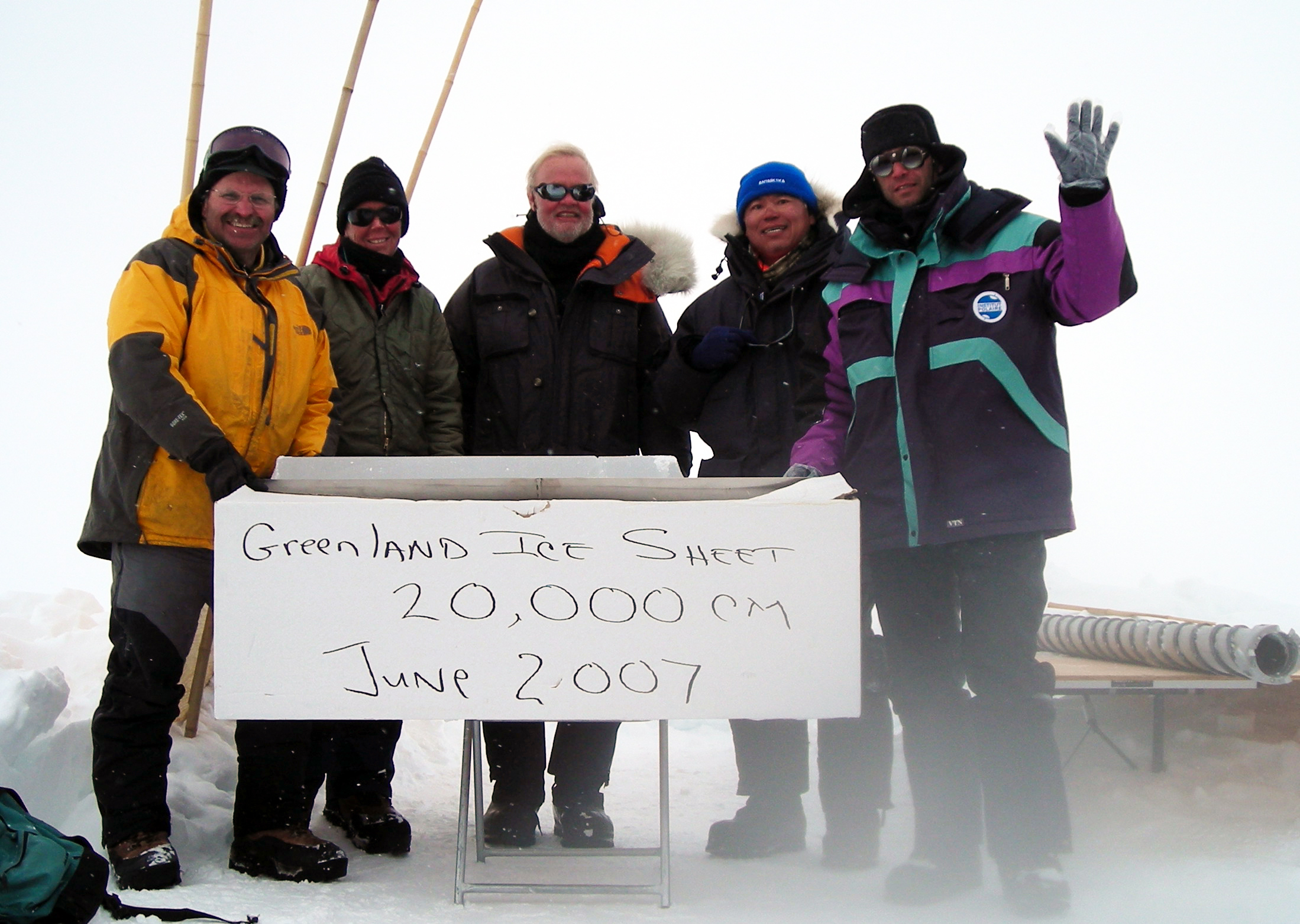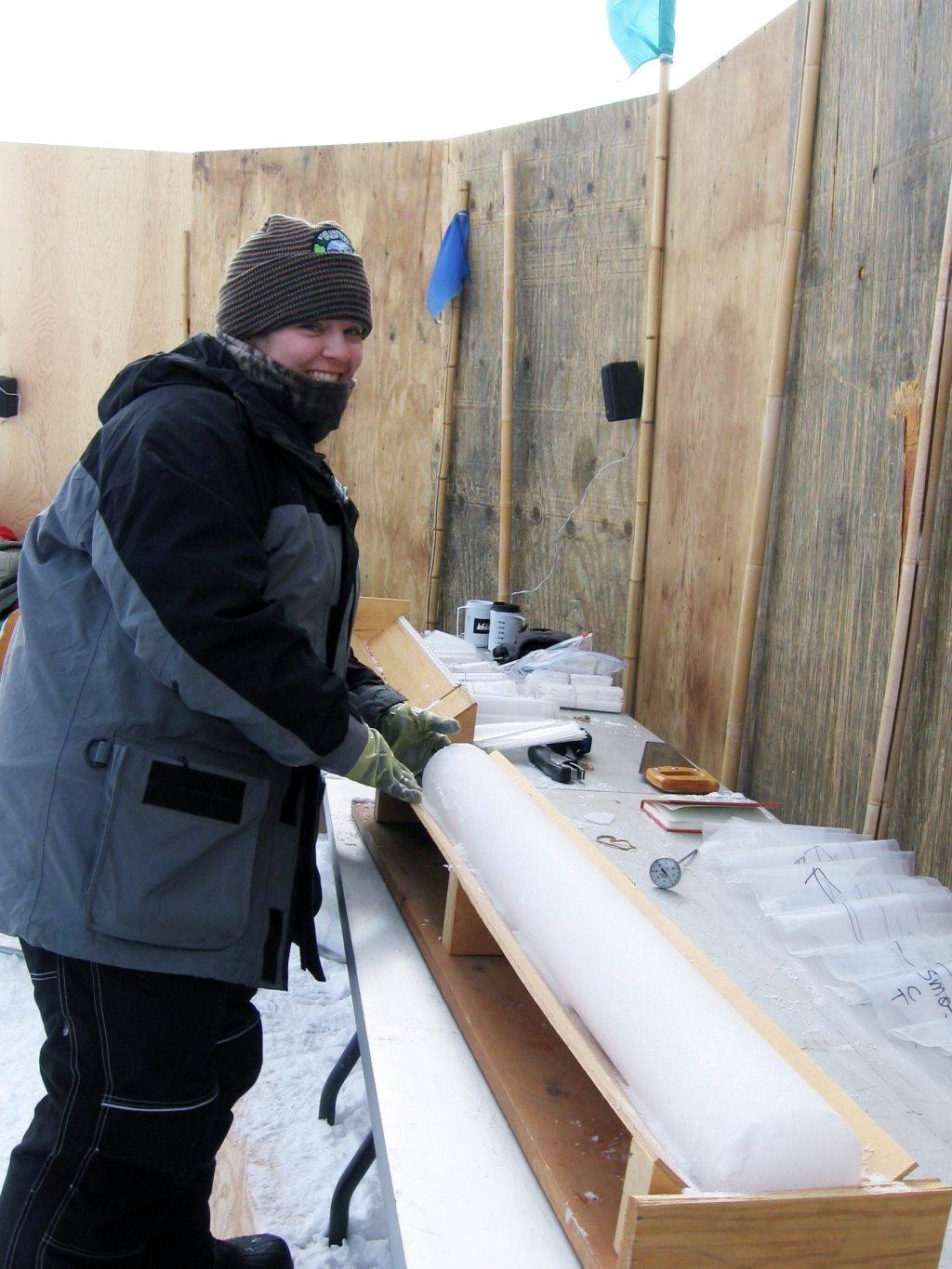
A team of scientists and engineers spent six weeks, from June to mid-July of 2007, at Summit Station, Greenland to drill ice cores for an atmospheric chemistry research project. The main objective of the collaborative project between South Dakota State University and the University of California-San Diego is to understand the oxidation chemistry of the atmosphere by studying the isotopic composition of sulfuric acid in ice that is formed in the atmosphere when sulfur compounds are emitted by volcanic eruptions.
The six members of the team were: Bella Bergeron and Terry Gacke from Ice Coring and Drilling Services (ICDS, University of Wisconsin), Alyson Lanciki and Jihong Cole-Dai from South Dakota State University (SDSU), Joël Savarino from Laboratoire de Glaciologie et Géophysique de l’Environnement (LGGE; Grenoble, France) and Mark Thiemens from University of California, San Diego (UCSD). When the team arrived at Summit in early June, an ice coring site located approximately 5 kilometers from the camp had been selected and set up by the camp staff. Researchers from another project had used the site in May and had dug a 3-meter deep snow pit for snow property studies.

Drilling activities began soon after the team’s arrival and continued through early July. A total of approximately 500 meters of ice core was collected from four boreholes, with bottom depths ranging from 80 to 215 meters. These ice core samples are expected to contain sulfuric acid from several large explosive volcanic eruptions that occurred during the last 800 years. The team also collected snow samples from a shallow (2 meter) snow pit dug near the boreholes. The snow and ice core samples filled nearly 100 large insulated shipping boxes. The team worked with Summit Station staff and the 109th Air National Guard to load and ship the boxes, weighing about 14,000 pounds, to Kangerlussuaq. Once in Kangerlussuaq, the boxes were stored in a large freezer at -15C until they were flown to Scotia, NY via C-130, and then sent via refrigerated truck to the National Ice Core Laboratory in Denver, CO.
During drilling, several groups of visitors to Summit Station, as well as members of other Summit research projects, visited the drill site. One large group of Danish and Greenland science teachers on an education and outreach project toured the drill site on June 20. They observed a demonstration of ice coring by the drilling team and learned how ice cores are used to study the global atmospheric environment and climate change. Several enthusiastic visitors tried their hands at handling ice cores and left with demonstration ice cores to use as teaching tools in their classrooms. In addition to learning about ice coring, the visiting teachers jumped into the 3-meter snow pit in which they observed, through a double-sided snow wall back-lit by the sun, the visible horizontal layers in snow that are often used to study snow stratigraphy and to determine the amount of annual snow fall.
Noted glaciologist Charlie Bentley, Principal Investigator of ICDS, visited with the drill team on June 20 and 21 and inspected the four-inch ICDS mechanical drill while in operation.
Over the next year, the ice core samples will be analyzed at the Ice Core and Environmental Chemistry Lab at South Dakota State University to determine the chronology and to locate the prominent volcanic events. The volcanic sulfuric acid will be extracted and later analyzed for isotopic composition at the University of California, San Diego.
